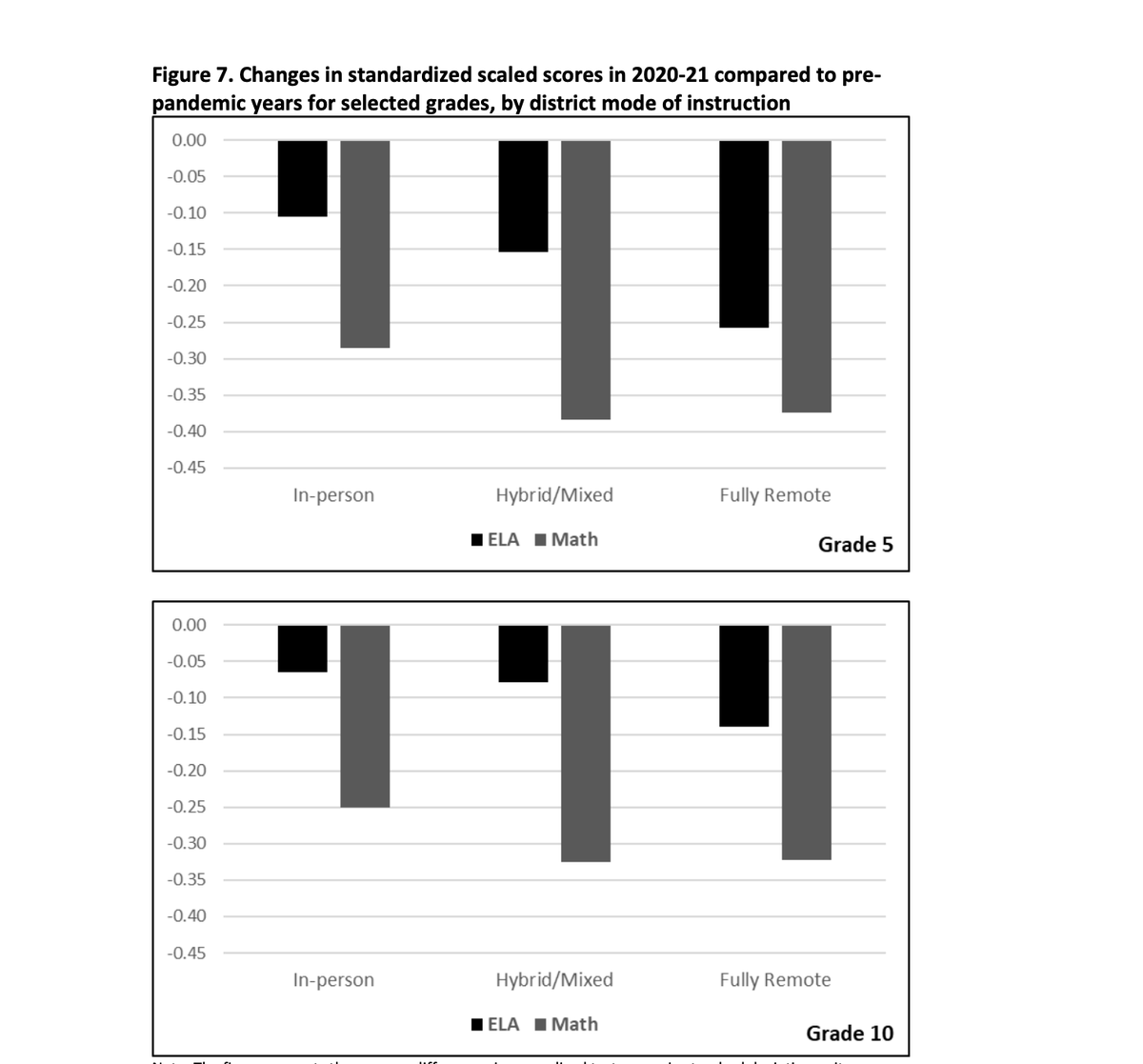1. THREAD:
THE TWITTER FILES: HOW TWITTER RIGGED THE COVID DEBATE
– By censoring info that was true but inconvenient to U.S. govt. policy
– By discrediting doctors and other experts who disagreed
– By suppressing ordinary users, including some sharing the CDC’s *own data*
THE TWITTER FILES: HOW TWITTER RIGGED THE COVID DEBATE
– By censoring info that was true but inconvenient to U.S. govt. policy
– By discrediting doctors and other experts who disagreed
– By suppressing ordinary users, including some sharing the CDC’s *own data*
2. So far the Twitter Files have focused on evidence of Twitter’s secret blacklists; how the company functioned as a kind of subsidiary of the FBI; and how execs rewrote the platform’s rules to accommodate their own political desires.
3. What we have yet to cover is Covid. This reporting, for The Free Press, @TheFP, is one piece of that important story.
4. The United States government pressured Twitter and other social media platforms to elevate certain content and suppress other content about Covid-19.
5. Internal files at Twitter that I viewed while on assignment for @TheFP showed that both the Trump and Biden administrations directly pressed Twitter executives to moderate the platform’s pandemic content according to their wishes.
6. At the onset of the pandemic, according to meeting notes, the Trump admin was especially concerned about panic buying. They came looking for “help from the tech companies to combat misinformation” about “runs on grocery stores.” But . . . there were runs on grocery stores. 
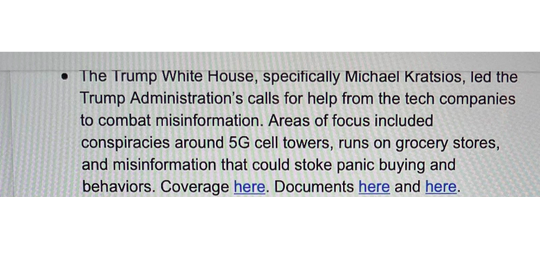
7. It wasn’t just Twitter. The meetings with the Trump White House were also attended by Google, Facebook, Microsoft and others. 
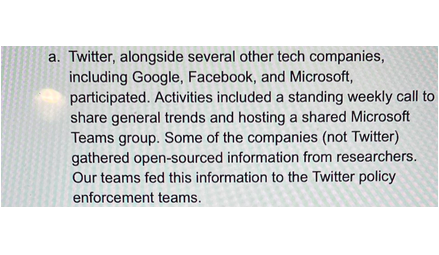
8. When the Biden admin took over, one of their first meeting requests with Twitter executives was on Covid. The focus was on “anti-vaxxer accounts.” Especially Alex Berenson: 
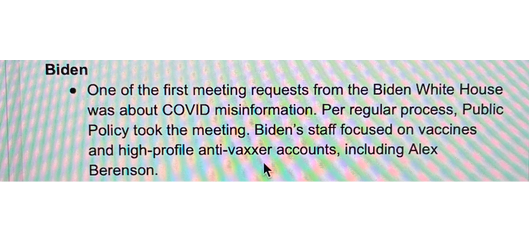
9. In the summer of 2021, president Biden said social media companies were “killing people” for allowing vaccine misinformation. Berenson was suspended hours after Biden’s comments, and kicked off the platform the following month.
10. Berenson sued (and then settled with) Twitter. In the legal process Twitter was compelled to release certain internal communications, which showed direct White House pressure on the company to take action on Berenson.
alexberenson.substack.com/p/jesse-jackso…
alexberenson.substack.com/p/jesse-jackso…
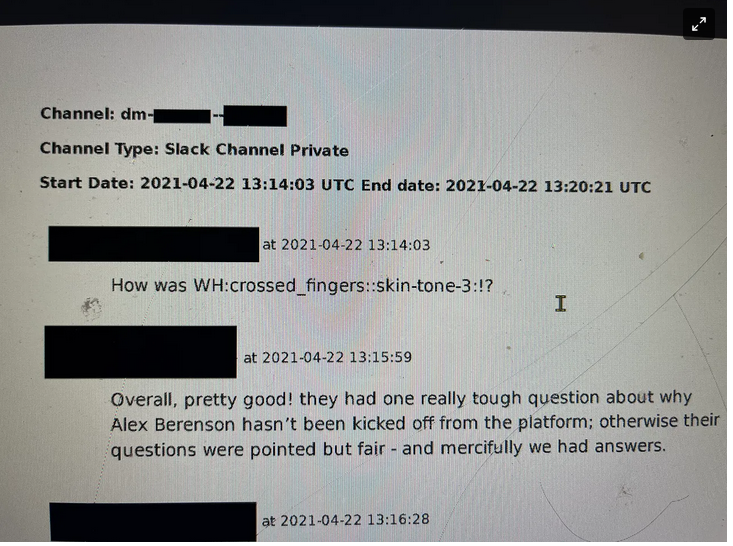
11. A December 2022 summary of meetings with the White House by Lauren Culbertson, Twitter’s Head of U.S. Public Policy, adds new evidence of the White House’s pressure campaign, and cements that it repeatedly attempted to directly influence the platform.
12. Culbertson wrote that the Biden team was “very angry” that Twitter had not been more aggressive in deplatforming multiple accounts. They wanted Twitter to do more. 
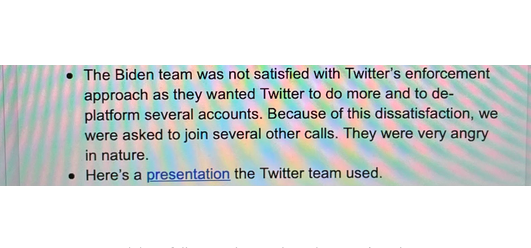
13. Twitter executives did not fully capitulate to the Biden team’s wishes. An extensive review of internal communications at the company revealed employees often debating moderation cases in great detail, and with more care than was shown by the government toward free speech.
14. But Twitter did suppress views—many from doctors and scientific experts—that conflicted with the official positions of the White House. As a result, legitimate findings and questions that would have expanded the public debate went missing.
15. There were three serious problems with Twitter’s process:
First, much of the content moderation was conducted by bots, trained on machine learning and AI – impressive in their engineering, yet still too crude for such nuanced work.
First, much of the content moderation was conducted by bots, trained on machine learning and AI – impressive in their engineering, yet still too crude for such nuanced work.
16. Second, contractors, in places like the Philippines, also moderated content. They were given decision trees to aid in the process, but tasking non experts to adjudicate tweets on complex topics like myocarditis and mask efficacy data was destined for a significant error rate 
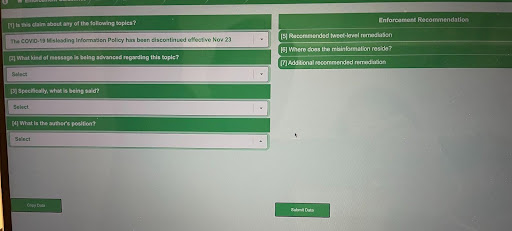
17 Third, most importantly, the buck stopped with higher level employees at Twitter who chose the inputs for the bots and decision trees, and subjectively decided escalated cases and suspensions. As it is with all people and institutions, there was individual and collective bias
18. With Covid, this bias bent heavily toward establishment dogmas.
19. Inevitably, dissident yet legitimate content was labeled as misinformation, and the accounts of doctors and others were suspended both for tweeting opinions and demonstrably true information.
20. Exhibit A: Dr. Martin Kulldorff, an epidemiologist at Harvard Medical School, tweeted views at odds with US public health authorities and the American left, the political affiliation of nearly the entire staff at Twitter. 
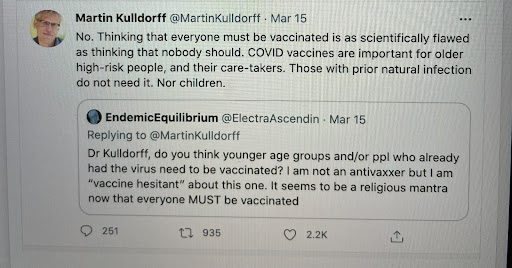
21. Internal emails show an “intent to action” by a moderator, saying Kulldorff’s tweet violated the company’s Covid-19 misinformation policy and claimed he shared “false information.” 
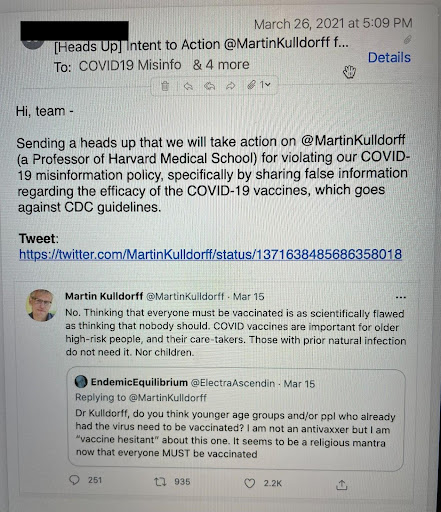
22. But Kulldorff’s statement was an expert’s opinion—one which also happened to be in line with vaccine policies in numerous other countries. Yet it was deemed “false information” by Twitter moderators merely because it differed from CDC guidelines.
23. After Twitter took action, Kulldorff’s tweet was slapped with a “Misleading” label and all replies and likes were shut off, throttling the tweet’s ability to be seen and shared by many people, the ostensible core function of the platform: 
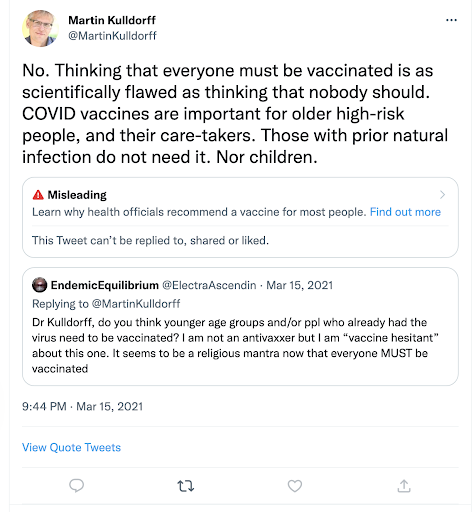
24. In my review of internal files, I found countless instances of tweets labeled as “misleading” or taken down entirely, sometimes triggering account suspensions, simply because they veered from CDC guidance or differed from establishment views.
25. A tweet by @KelleyKga, a self-proclaimed public health fact checker, with 18K followers, was flagged as “Misleading,” and replies and likes disabled, even though it displayed the CDC’s *own data.* 
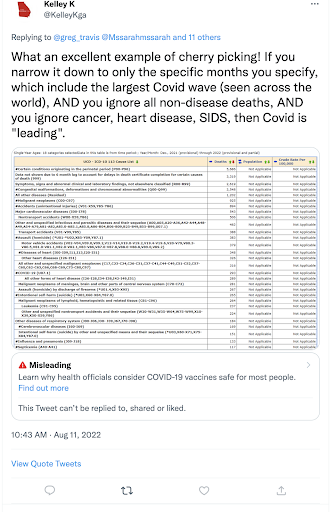
26. Internal records showed that a bot had flagged the tweet, and that it received many “tattles” (what the system amusingly called reports from users). That triggered a manual review by a human who– despite the tweet showing actual CDC data–nevertheless labeled it “Misleading”
27. Tellingly, the tweet by @KelleyKga that was labeled “Misleading” was a reply to a tweet that contained actual misinformation.
Covid has never been the leading cause of death from disease in children. Yet that tweet remains on the platform, and without a “misleading” label.
Covid has never been the leading cause of death from disease in children. Yet that tweet remains on the platform, and without a “misleading” label.
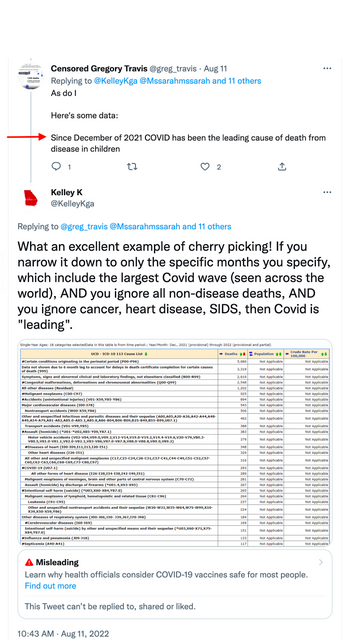
28. Whether by humans or algorithms, content that was contrarian but true was still subject to getting flagged or suppressed
This tweet was labeled “Misleading,” even though the owner of this account, @_euzebiusz_, a physician, was referring to the results of a published study
This tweet was labeled “Misleading,” even though the owner of this account, @_euzebiusz_, a physician, was referring to the results of a published study

29. Andrew Bostom, a Rhode Island physician, was permanently suspended from Twitter after receiving multiple strikes for misinformation. One of his strikes was for a tweet referring to the results from a peer reviewed study on mRNA vaccines. 
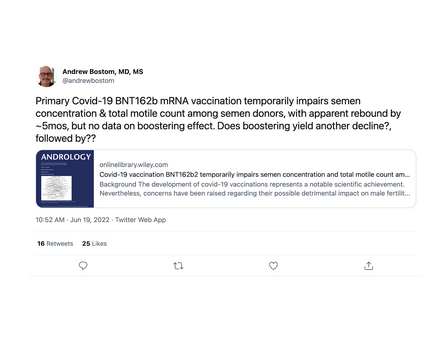
30. A review of Twitter log files revealed that an internal audit, conducted after Bostom’s attorney contacted Twitter, found that only 1 of Bostom’s 5 violations were valid. 
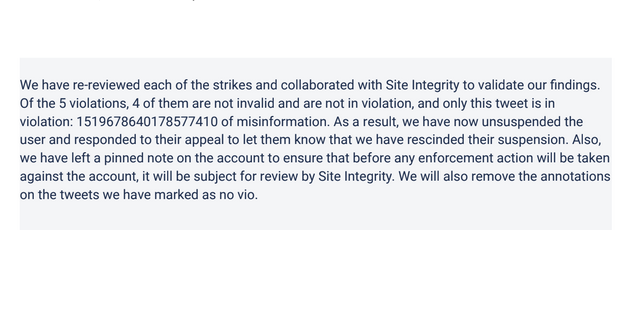
31. The one Bostom tweet found to still be in violation cited data that was legitimate but inconvenient to the public health establishment’s narrative about the risks of flu versus Covid in children. 
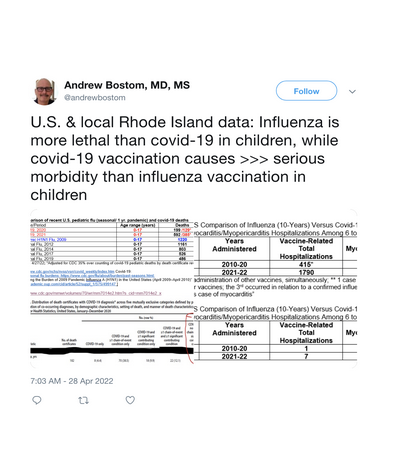
32. That this tweet was not only flagged by a bot, but its violation manually affirmed by a staff member is telling of both the algorithmic and human bias at play. Bostom’s account was suspended for months and was finally restored on Christmas Day.
33. Another example of human bias run amok was the reaction to this tweet by Trump. Many Trump tweets led to extensive internal debates, and this one was no different. 

34. In a surreal exchange, Jim Baker, at the time Twitter’s Deputy General Counsel, asks why telling people to not be afraid wasn’t a violation of Twitter’s Covid-19 misinformation policy. 
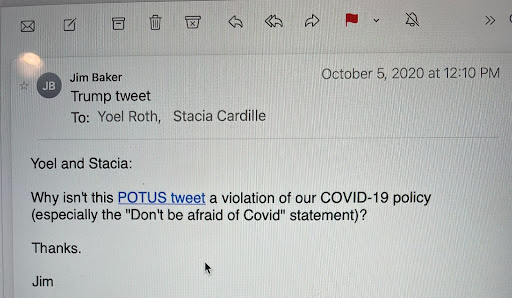
35. Yoel Roth, Twitter’s former head of Trust & Safety, had to explain that optimism wasn’t misinformation. 
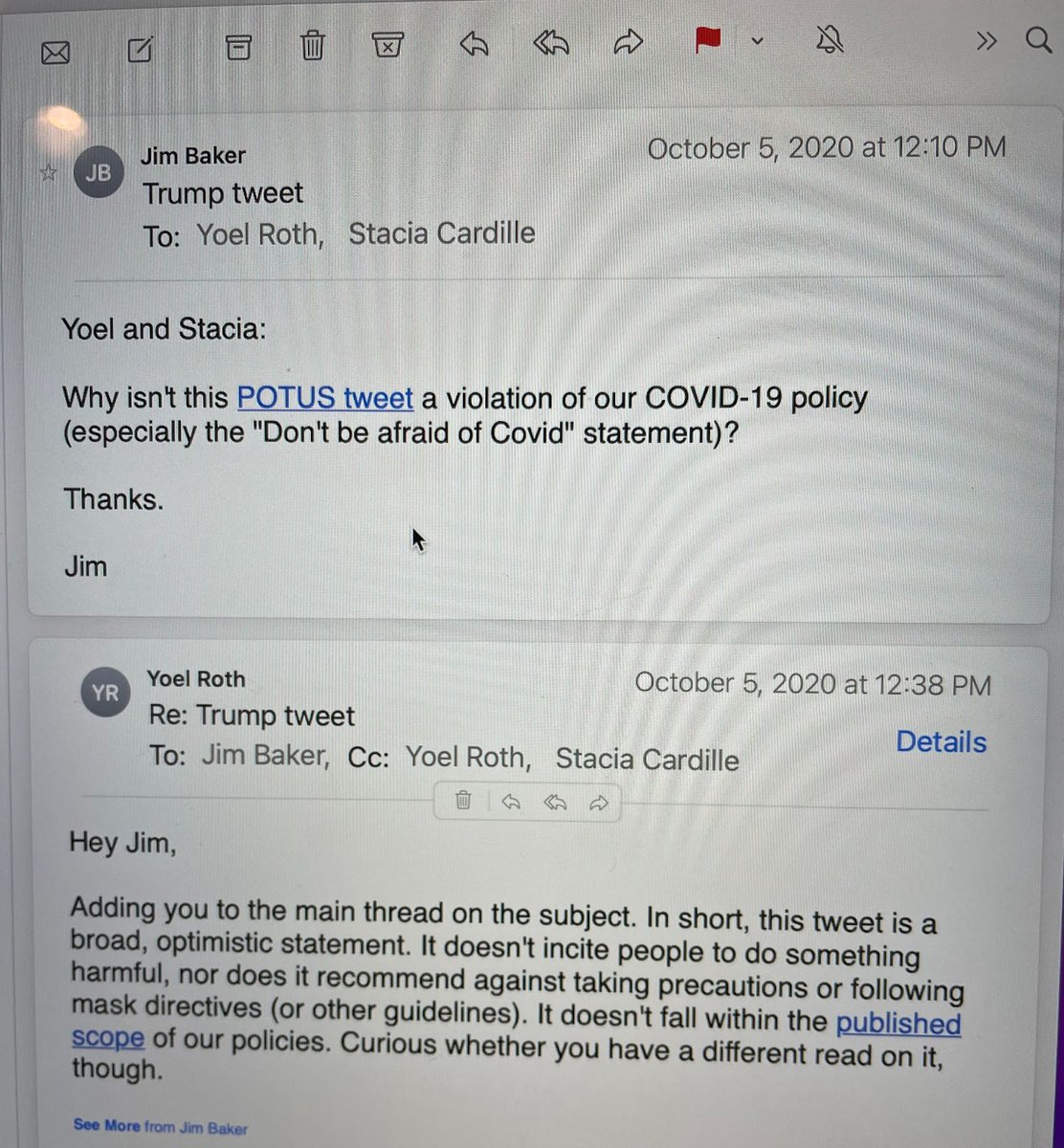
36. Remember @KelleyKga with the CDC data tweet? Twitter’s response to her is clarifying: “we will prioritize review and labeling of content that could lead to increased exposure or transmission.” 
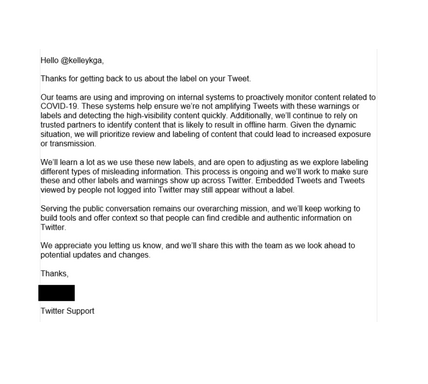
37. Twitter made a decision, via the political leanings of senior staff, and govt pressure, that the public health authorities’ approach to the pandemic – prioritizing mitigation over other concerns – was “The Science” . . .
38. Information that challenged that view, such as showing harms of vaccines, or that could be perceived as downplaying the risks of Covid, especially to children, was subject to moderation, and even suppression. No matter whether such views were correct or adopted abroad.
39. What might this pandemic and its aftermath have looked like if there had been a more open debate on Twitter and other social media platforms—not to mention the mainstream press—about the origins of Covid, about lockdowns, about the true risks of Covid in kids, and much more?
40. Thanks to @ShellenbergerMD, @lwoodhouse, @lhfang and the team @TheFP for their help reporting this story.
• • •
Missing some Tweet in this thread? You can try to
force a refresh



